Q
berapa cc mazda 3 hatchback
In Malaysia, the BMW iX comes with a range of price tags depending on the variant and specs you go for. Right now, the entry-level iX xDrive40 starts at around RM 420,000, while the high-performance iX xDrive50 kicks off at roughly RM 630,000. Of course, these numbers can shift a bit based on added options, dealer discounts, or ongoing promotions.
As a fully electric luxury SUV, the iX packs BMW's fifth-gen eDrive tech, delivering solid range and performance. The xDrive40 manages around 400 km on a single charge, and the xDrive50 ups that to about 600 km – plus, it supports fast charging, making it a solid pick for Malaysians needing to hit the highway.
Inside and out, it’s loaded with advanced driver assistance systems and premium touches: think that sleek curved display, natural wood trims, and BMW’s usual knack for blending electric innovation with sustainable materials.
For Malaysian buyers, there’s more good news – electric vehicles qualify for government tax breaks, like cuts on import and sales taxes, which helps bring down the overall cost of ownership.
If the iX has caught your eye, your best bet is to hook up with a local authorized BMW dealer. They can give you the latest pricing, sort out a test drive, and let you experience firsthand how this EV mixes tech and performance.
Special Disclaimer: This content is published by users and does not represent the views or position of PCauto.
Related Q&A
Q
What Segment is Mazda 3 Hatchback?
The Mazda 3 Hatchback falls into the C-Segment (also known as compact cars segment) in the Malaysian market, sharing the same class as models like the Honda Civic and Toyota Corolla. This five - door hatchback is popular among young consumers for its dynamic design, refined interior, and excellent handling performance. The Skyactiv - technology engine it's equipped with strikes a balance between fuel efficiency and power output, making it suitable for both city driving and long - distance trips.
In Malaysia, C - Segment models are well - received for their combination of practicality and driving pleasure. The Mazda 3 Hatchback further enhances its competitiveness by offering a wide range of features such as a head - up display and a Bose audio system.
It's worth noting that when Malaysian consumers are making a purchase, they can compare the after - sales warranty policies and spare - parts availability of competing models in the same segment. At the same time, they should also consider their own needs regarding body size and trunk space. Although the hatchback design is stylish, its cargo - carrying capacity is slightly inferior to that of the sedan version. If you often need to carry a large amount of cargo, you may need to weigh the pros and cons.
Q
What is the Reslae Value of Mazda 3 Hatchback?
The Mazda 3 Hatchback has shown stable resale value in the Malaysian used - car market. This is mainly due to its outstanding design, reliable powertrain, and the brand's good reputation. Generally, a three - year - old used Mazda 3 Hatchback can retain 60% to 70% of its original price, depending on the vehicle's age, mileage, and maintenance condition. If the car has been well - maintained and has low mileage, its residual value could be even higher.
Mazda's Skyactiv technology has improved fuel efficiency and the driving experience, further enhancing its market competitiveness. Regular maintenance at authorized service centers and keeping complete records can also significantly increase the used - car value. Moreover, Malaysian consumers prefer Japanese cars for their high durability and low maintenance costs, which makes the Mazda 3 Hatchback quite popular in the used - car market.
For potential buyers, it is recommended to check the vehicle's accident history and repair records. At the same time, compare it with competing models of the same year, such as the Honda Civic or the Toyota Corolla Hatchback, to make a more comprehensive decision.
Q
How Many CC is Mazda 3 Hatchback?
The Mazda 3 Hatchback offers engine options in the Malaysian market, mainly including the 1.5-liter and 2.0-liter Skyactiv-G gasoline engines with displacements of 1496cc and 1998cc respectively. Both of these engines adopt Mazda's advanced Skyactiv technology, which focuses on balancing fuel efficiency and power output. The 1.5-liter version is suitable for daily commuting, while the 2.0-liter version can provide stronger power performance.
For Malaysian consumers, it's important to choose the right engine displacement according to their needs. Displacement not only affects power performance but also road tax and fuel economy. In Malaysia, road tax is calculated based on engine displacement; the larger the displacement, the higher the road tax. Thanks to the optimization of Skyactiv technology, these two engines can achieve good power output while also taking fuel economy into account.
The Mazda 3 Hatchback is very popular among young consumers for its excellent handling and Kodo design language. It's a popular hatchback model in the Malaysian market that combines sportiness and practicality, and it can handle both city driving and occasional long - distance trips.
Q
What is the Engine in Mazda 3 Hatchback?
The Mazda 3 Hatchback mainly offers two high - performance Skyactiv - G gasoline engine options in the Malaysian market, namely the 1.5 - liter and 2.0 - liter four - cylinder naturally aspirated engines. The 1.5 - liter version has a maximum output power of 114 horsepower, which is suitable for daily commuting and has excellent fuel economy. The 2.0 - liter version provides 156 horsepower, with more abundant power. It is also equipped with Mazda's unique Skyactiv - Vehicle Dynamics vehicle dynamic management system, offering more precise handling performance.
Both of these two engines adopt a high - compression ratio design (13:1). Combined with direct - injection technology and a 4 - 2 - 1 exhaust system, they effectively improve combustion efficiency and reduce fuel consumption, while meeting the Euro 5 emission standards in Malaysia. It's worth noting that Mazda's Skyactiv technology optimizes internal engine friction and uses lightweight design. While maintaining the linear power output of the naturally aspirated engine, it also takes environmental protection performance into account, making it suitable for Malaysia's diverse road conditions.
If you have higher performance requirements, you can pay attention to the Skyactiv - X compression - ignition engine version available in overseas markets. Its thermal efficiency is further improved through the SPCCI spark - controlled compression ignition technology. However, this version has not been introduced to Malaysia yet. It is recommended that car owners regularly use the 0W - 20 low - viscosity engine oil recommended by the original factory and 95 - octane or higher gasoline to fully unleash the engine's performance.
Q
What is the Gearbox Type of Mazda 3 Hatchback?
The Mazda 3 Hatchback offers two main types of transmissions in the Malaysian market, namely the 6-speed automatic manual integrated transmission (Skyactiv-Drive) and the 6-speed manual transmission. The specific configuration depends on the model version and the year. Among them, the Skyactiv-Drive automatic transmission is well - known for its smooth shifting experience and fuel economy. It adopts Mazda's exclusive Skyactiv technology, which enhances the driving experience by optimizing transmission efficiency and reducing power loss. The manual transmission version is more suitable for drivers who pursue the joy of control, providing more direct shifting feedback. It's worth mentioning that Mazda's Skyactiv technology not only focuses on performance but also takes environmental protection needs into account, which meets the preference of the Malaysian market for energy - efficient models. If you have further questions about the transmission configuration of specific models, it is recommended to check the official website of Mazda Malaysia or consult local dealers to get the latest information. At the same time, you can also take a test drive to experience the actual performance of different transmissions so as to choose the version that best suits your driving habits.
Q
What is the PCD Size of Mazda 3 Hatchback?
The PCD (Pitch Circle Diameter) of the Mazda 3 Hatchback is 5x114.3. This means there are 5 bolt holes on the wheel hub, and the centers of these holes are distributed on a circle with a diameter of 114.3 millimeters. This specification is quite common in the Malaysian market and is shared by many Japanese - made models such as the Honda Civic and Toyota Corolla, which makes it convenient for car owners to replace or upgrade their wheels. Understanding the PCD size is crucial when replacing wheels or installing new tires, as an incorrect PCD will prevent the wheels from being installed properly, which can affect driving safety.
Apart from the PCD, when choosing wheels, car owners also need to pay attention to the center bore diameter (CB) and the offset value (ET) to ensure a perfect match with the vehicle. In Malaysia, many wheel modification shops are familiar with these parameters. It's recommended that car owners consult professionals or refer to the vehicle manual before modification to ensure compatibility.
The Mazda 3 Hatchback is well - known for its handling and design. A reasonable wheel upgrade can further enhance its appearance and performance. However, it's essential to choose high - quality products that meet the specifications to ensure safety.
Q
Does Mazda 3 Hatchback Have Apple Carplay?
Yes, the Mazda 3 Hatchback in the Malaysian market is indeed equipped with Apple CarPlay. This feature has become standard in recent models, allowing iPhone users to seamlessly connect their phones to the car's display and use apps like navigation, music, and calls. The entertainment system of the Mazda 3 Hatchback also supports Android Auto, meeting the needs of users with different types of phones. Its user interface is clean and smooth, integrating well with the Mazda Connect system, which enhances both convenience and safety while driving. In addition to Apple CarPlay, the vehicle also comes with several practical technologies, such as a Head-Up Display (HUD) and a Bose sound system, further enhancing the driving experience. For Malaysian consumers, the Mazda 3 Hatchback is not only known for its stylish design and handling performance, but its rich technological features also make it a popular choice among cars in the same class. If you value smart connectivity features, this car is worth considering.
Q
What is the Tyre Brand of Mazda 3 Hatchback?
The original - equipped tire brands of the Mazda 3 Hatchback in the Malaysian market may vary depending on the model year and configuration. Common combinations include international brands such as Bridgestone, Dunlop, or Toyo. Specific models, like the Bridgestone Turanza T005A or Dunlop Enasave EC300+, focus on quiet comfort and wet - surface performance, meeting the needs of the local rainy climate. Car owners can confirm the original specifications through the sidewall markings of the tires or the vehicle manual. It is recommended to choose tires that match the original size (e.g., 215/45 R18) and load index to ensure safety.
If replacement is needed, similar products such as the Michelin Primacy 4 or Goodyear EfficientGrip can be considered. They also emphasize low rolling resistance and durability. However, it should be noted that the dry and wet - surface performance and wear - resistance index of tires from different brands may affect the driving experience.
In Malaysia, where it is hot and rainy, regularly checking the tire pressure and tread depth (it is recommended to be no less than 1.6 millimeters) can extend the tire life and improve fuel economy. Pay more attention to the drainage performance before the rainy season to prevent skidding.
Q
Is Mazda 3 Hatchback a Good Car? Learn the Pros and Cons Here
The Mazda 3 Hatchback is a compact hatchback that's quite popular in the Malaysian market. Its advantages include a stylish and dynamic exterior design, delicate interior craftsmanship, and excellent handling performance. The Skyactiv - technology engine it's equipped with strikes a good balance between fuel economy and power output. Meanwhile, the standard i - Activsense safety system offers leading active and passive safety features in its class.
However, the rear - seat space is relatively cramped, and the maintenance and repair costs are slightly higher than some Japanese competitors. The sporty suspension tuning might not meet the comfort needs of some consumers. For Malaysian consumers, this car is especially suitable for young people who pursue driving pleasure. Its Kodo design language also enjoys high popularity in the local car modification circle.
It's worth noting that in tropical climates, it's advisable to choose ventilated seats and regularly check the air - conditioning system. At the same time, the 5 - year warranty policy provided by the manufacturer can effectively reduce the cost of car ownership. Among models in the same class, you can also refer to the Toyota Corolla Hatchback or the Honda Civic Hatchback for a horizontal comparison. It's recommended to take a test drive and then make a choice according to your personal needs.
Q
What is the Width of Mazda 3 Hatchback?
According to official data, the body width of the Mazda 3 Hatchback is 1,795 millimeters. This dimension puts it in the upper - middle range among compact hatchbacks in the Malaysian market. It offers both a comfortable seating space and great maneuverability for city driving. For Malaysian consumers, this width ensures that they don't feel cramped when driving on narrow streets or in parking lots, while also guaranteeing sufficient lateral space for passengers inside the car.
The Mazda 3 Hatchback features the brand's unique Kodo design language. The smooth body lines not only enhance the car's visual dynamism but also optimize its aerodynamic performance. In Malaysia's tropical climate, the car's air - conditioning system can effectively cool the entire cabin, ensuring a comfortable driving and riding experience.
Notably, the handling performance of the Mazda 3 Hatchback has also received wide acclaim. Its precise steering and stable cornering performance are well - suited to Malaysia's winding roads. Additionally, this car is equipped with a wealth of safety features, such as blind - spot monitoring and lane - keeping assist systems, which provide extra protective support for Malaysian drivers.
Popular Cars
Model Year
Car Compare
Car Photo
Latest Q&A
Q
How is engine torque calculated?
There are mainly two methods for calculating engine torque. At the basic physics level, it can be calculated by the product of force and moment arm, with the formula: Torque M = Force F × Moment Arm r (where F is the force acting perpendicularly on the moment arm, in Newtons; r is the length of the moment arm, in meters; the resulting unit is Newton-meters, Nm). In automotive engineering, the commonly used calculation method is based on the engine's output power and rotational speed, with the formula: Torque T = 9550 × Power P ÷ Rotational Speed n (where P is the output power, in kilowatts, kW; n is the rotational speed, in revolutions per minute, rpm). For example, an engine with a power of 100 kW and a rotational speed of 5000 rpm has a torque of 9550 × 100 ÷ 5000 = 191 Nm. Torque is widely used in the automotive field. During the design phase, it can be used to optimize the parameter matching of the engine, transmission, and drive system by calculation, and select an appropriate gear ratio to balance power and fuel economy. In performance testing, the torque curve can reflect the dynamic characteristics of the engine and help evaluate the power transmission efficiency. In the manufacturing process, parts assembly must strictly follow torque requirements. For instance, the bolt tightening torque should be moderate to avoid loosening or damage, ensuring the reliability and stability of the vehicle.
Q
Is higher or lower engine torque better?
Engine torque is not simply a matter of higher or lower being better; it needs to be judged comprehensively based on the vehicle's purpose and power requirements. Torque refers to the twisting moment output by the engine crankshaft, measured in Newton-meters. It directly affects a vehicle's acceleration from a standstill, climbing performance, and load-carrying capability—greater torque means more responsive power at low engine speeds, a stronger "push-back" feeling during acceleration, easier climbing or load-carrying, and fewer gear shifts in daily driving, which reduces component wear. However, torque must be considered in conjunction with power and rotational speed. Power (which determines the maximum speed) is derived from the product of torque and rotational speed. If torque is high but rotational speed is limited, the vehicle may lack sustained acceleration capability at high speeds. For example, models designed for off-roading or heavy load-carrying prioritize high-torque tuning to handle complex road conditions, while sports cars pursuing top speed need to balance torque with power output at high rotational speeds. Therefore, when choosing a vehicle, one should consider the usage scenario: sufficient torque is a priority for urban commuting or off-roading, while a balance between torque and power is required for high-speed cruising or racing.
Q
How much is 1 nm in torque?
1 N·m (Newton-meter) is the international unit of torque, referring to the rotational torque effect generated by applying a force of 1 Newton on a 1-meter-long moment arm. For example, when a 1-meter-long wrench is used to tighten a screw with a force of 1 Newton, the torque exerted on the screw is 1 Newton-meter. In the automotive field, the Newton-meter is a key parameter for measuring the "rotational force" output at the crankshaft end of an engine. The torque output by the engine is amplified through transmission systems such as the gearbox and drive shaft before being transmitted to the wheels to propel the vehicle forward; even a torque of 1 Newton-meter can be converted into effective driving force to push the vehicle after being amplified by the gear ratios of the transmission system (such as gearbox gears and final drive). The magnitude of torque directly affects vehicle performance. For instance, the greater the torque, the stronger the vehicle's starting acceleration, climbing ability, and load-carrying capacity usually are. A family car with large torque accelerates more responsively, an off-road vehicle with large torque climbs more easily, and a truck with large torque has a greater load-carrying capacity.
Q
Why is engine torque important?
Engine torque is one of the core indicators for measuring vehicle performance. It refers to the rotational force output by the engine from the crankshaft end (measured in Newton-meters) and has a crucial impact on driving experience and practical performance.
First, torque directly determines acceleration performance. Models with high torque can quickly increase speed when starting from zero, providing a noticeable "back-pressing sensation". In urban driving, they respond more rapidly when traffic lights turn green and make overtaking easier and more efficient.
Second, torque affects climbing ability. When facing steep slopes or mountainous roads, high-torque vehicles can maintain stable power output without frequent downshifting, making climbing smoother and less strenuous.
Third, torque is strongly related to load capacity. For family cars, high torque ensures smooth acceleration; for off-road vehicles, it delivers excellent off-road passability; and for trucks, it allows higher load weights.
In addition, high torque can enhance stability during high-speed driving and reduce the risk of skidding. Moreover, properly tuned high-torque engines can output sufficient power at low speeds, which helps reduce fuel consumption and vehicle wear.
When choosing a car, it is necessary to balance torque parameters according to usage needs. For daily commuting, models with appropriately matched torque are more economical, while for off-road or load-carrying requirements, priority should be given to high-torque engines to meet driving needs in different scenarios.
Q
Is 500 Nm torque good?
A torque of 500 Nm represents a relatively strong level in terms of automotive power performance, and its specific evaluation needs to be considered in conjunction with the vehicle's intended use. In the Malaysian market, the torque of ordinary family SUVs such as the Proton X70 is approximately 255 Nm; the high-output version of mid-to-large pickup trucks like the Mitsubishi Triton Athlete has a torque of 470 Nm; high-end hybrid SUVs such as the Tank 500 can achieve a combined torque of 750 Nm; and commercial diesel engines like the Cummins ISF3.8 have a torque range of 450-600 Nm.
A torque of 500 Nm is higher than that of most family cars and close to the medium-to-high torque range of pickup trucks and commercial vehicles. It can provide excellent traction, making it suitable for scenarios such as heavy loading, off-roading, or towing. It delivers strong power response at low engine speeds, enhancing the vehicle's climbing ability and acceleration performance. For users pursuing power performance, this is an excellent level.
Torque is a key indicator for measuring a vehicle's traction as well as its ability to start and overtake. Higher torque means the vehicle can handle complex road conditions or load-carrying situations more calmly. Within the category of non-performance sports cars, 500 Nm is a good torque value that can meet various high-intensity usage needs.
View MoreRelated News

Seeing the Ferrari Purosangue reminds one of the Mazda 3 Hatchback
Kevin WongDec 2, 2024
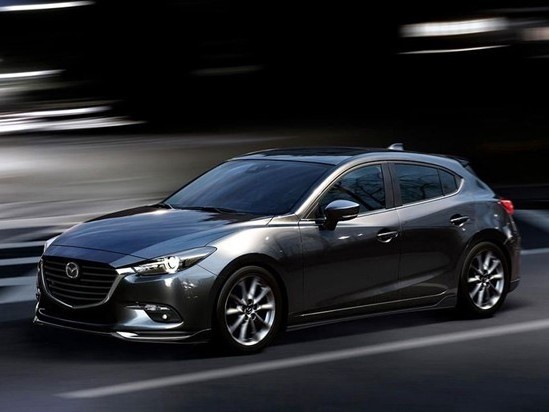
2023 Mazda 3 Hatchback: Six colors, two configurations, is it worth RM160,000?
JohnOct 17, 2024
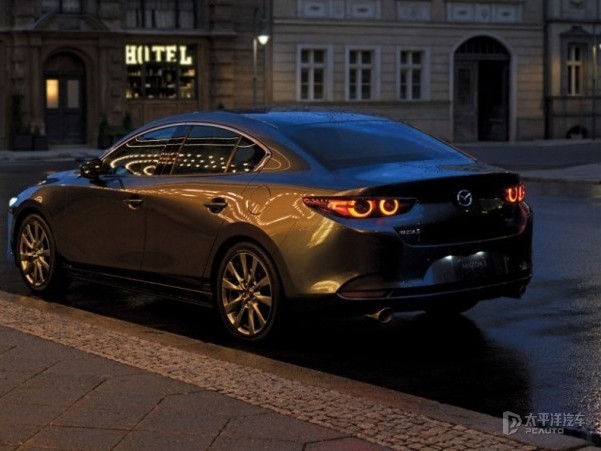
Mazda 3 Hatchback, priced from RM166,059, how to choose between the two models?
AshleyJul 15, 2024
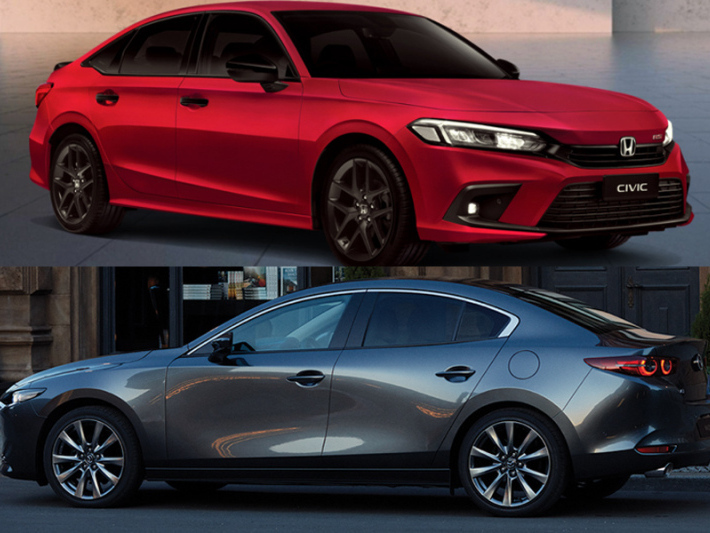
Budget RM 160k, 6AT or CVT: Mazda3 2.0 High+ vs Honda Civic 1.5L RS
LienMay 6, 2024

Subaru switched to a CBU strategy, CX-5 prices dropped significantly, who is the ultimate choice for handling performance?
RobertDec 30, 2025
View More












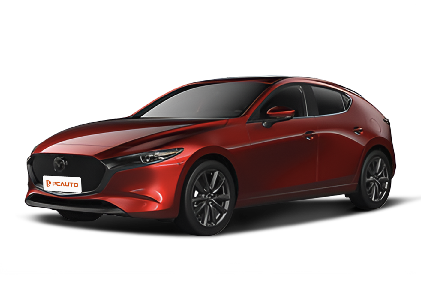

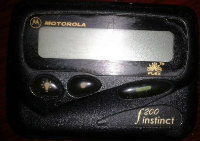



Pros
Cons